|
Christmas, 2003 - Upon arrival in Hanoi, we were shuttled
to several hotels, none of which would qualify for an appropriate hotel to
freshen up. When we finally gathered our remaining luggage and were checked into
an acceptable hotel, we freshened up and had breakfast. Somehow we
missed an opportunity to have a real Christmas dinner in the main dining room.
Late morning, we caught a flight to Hue. We were now in Central Vietnam where we
found the air warmer but much cloudier. We check into
the Saigon Morin built in the early 1900's by a Frenchman as the center of the
French enclave. After a leisurely lunch, we left to visit the imperial
city of Hue. We first notice the giant Flag Tower, a symbol of Hue.
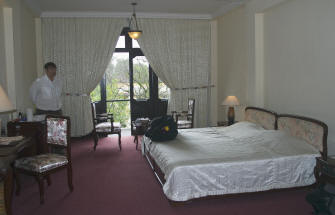
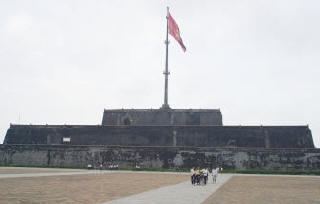
The Imperial
Citadel, a World Heritage site, had suffered extensive damage especially during
the Tet Offensive of 1968, and is being restored. Inside the outer walls
of the Citadel is the Imperial City, once a complex of palaces and pavilions
where civil and religious ceremonies took place. Inside is a forbidden
city reminiscent of its Beijing counterpart where the royal family resided.
A Hall for the Mandarins (court officials) and royal library all are laid out in
a very processional orientation within the City.
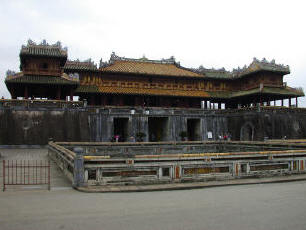
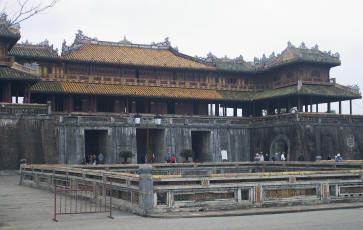
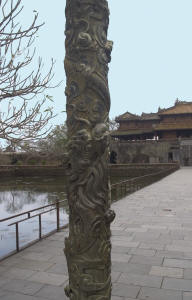
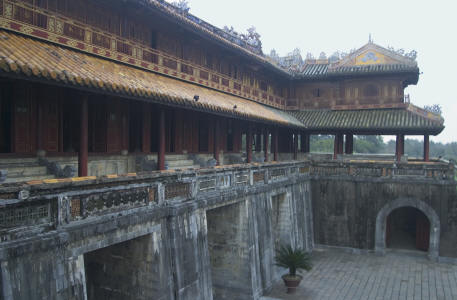
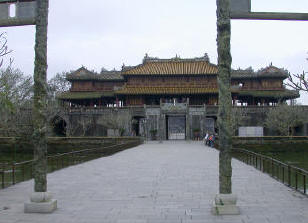
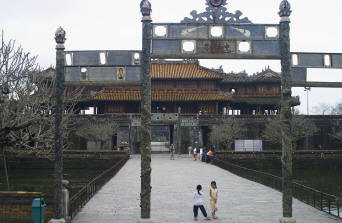
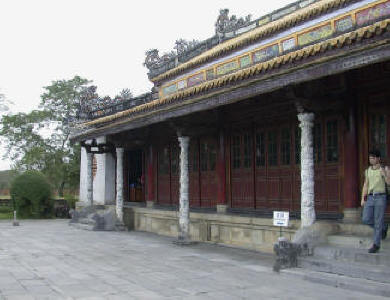
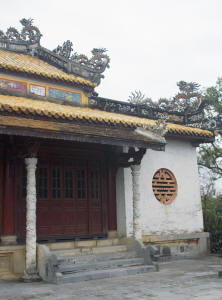
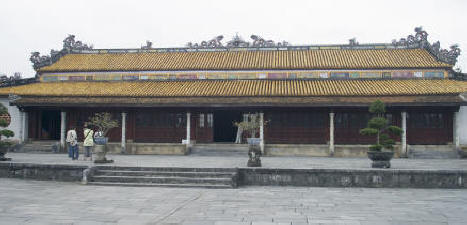
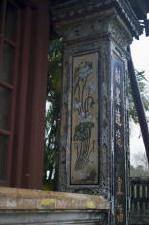
We were struck by the young age of this complex. Where we
have visited structures that date back hundreds of years, these buildings were
originally erected in the 19th Century.
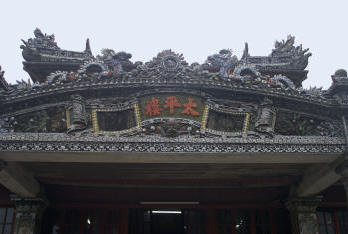
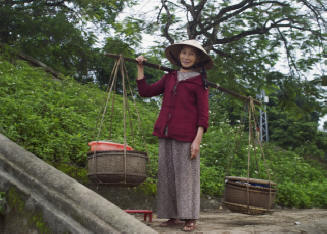
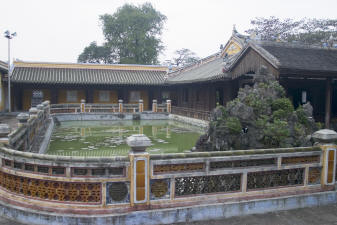
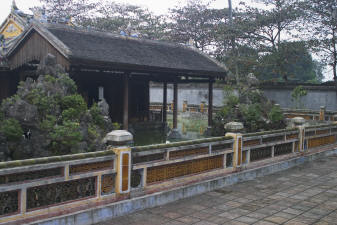
The Nine Dynastic Urns symbolize the Nguyen dynasty. Each
weigh ~5,000 lbs and were cast in 1835 for dedication to the rulers of Nguyen.
Although the urns are not very old, the Chinese designs and motifs date back
4,000 years. On our way out of the Citadel, we walk through the Central
Market to catch a flavor for the local shopping.
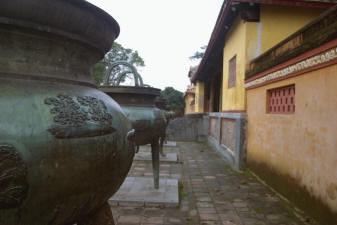
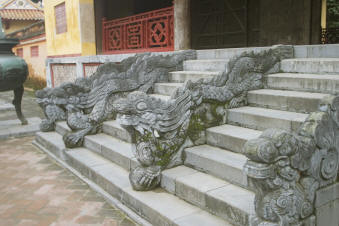
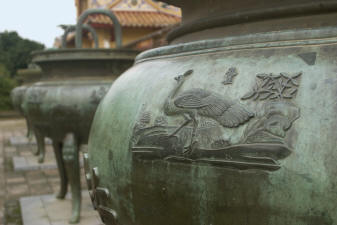
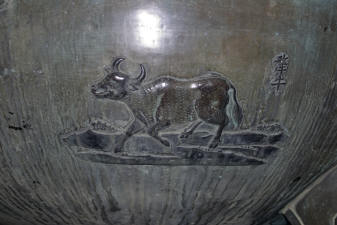
Our Christmas Dinner was at the Hue Riverside Century
Restaurant - an unusual holiday, all around.
Dec 26 - The weather was threatening rain but we
were on our way via boat down the Perfume River. The tour boats were
all lined up but we were the only people out sightseeing on this less than ideal
morning.
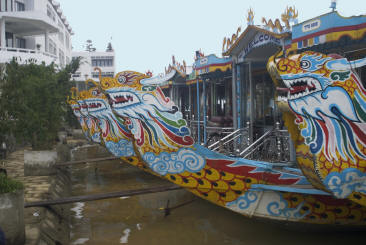
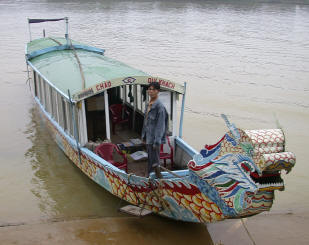
The river is slow moving, almost stagnant, a factor that is
causing quality of life issues for the local fishermen. The pollution and
dumping into the Perfume exacerbates the problem creating an environmental
nightmare. While slowly making our way down the river, Care tried on a
traditional Vietnamese silk outfit - it came home with her.
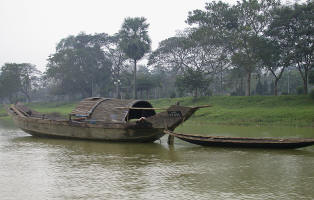
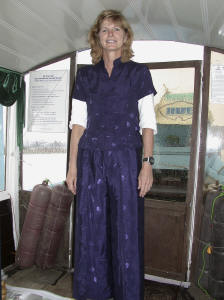
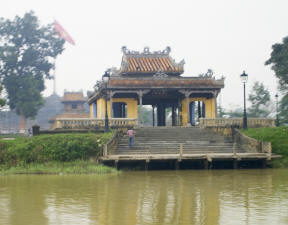
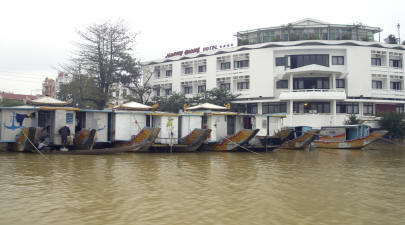
We catch a glimpse of our first stop from the river - Thien
Mu Pagoda. Built in 1844 , the 7 tiers of the temple's octagonal tower represent
a different reincarnation of Buddha.
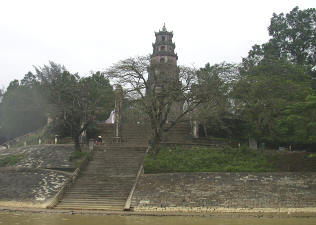
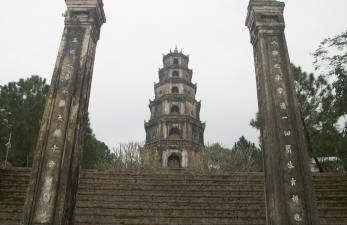
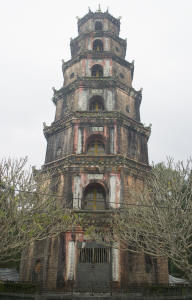
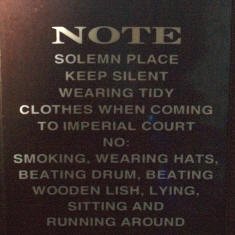
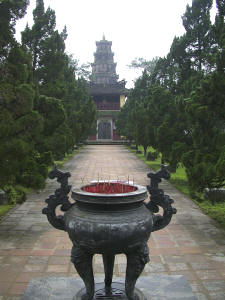
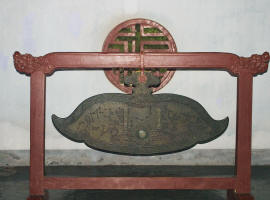
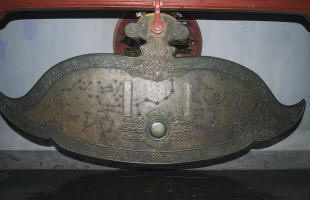
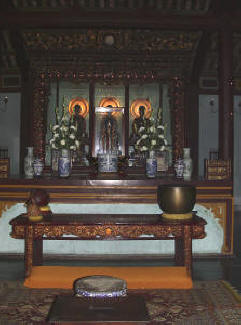
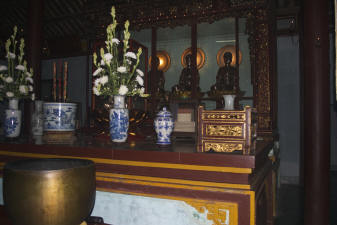
This is a training center for monks, so they are accessible
throughout the grounds. Across the courtyard from the temple's main
entrance, is the famous Austin car that delivered in 1963 the Buddhist monk, Thich
Quang Duc, to Saigon, where he set himself on fire (captured on world TV), as a
pacifist act of protest against Pres. Diem's regime.
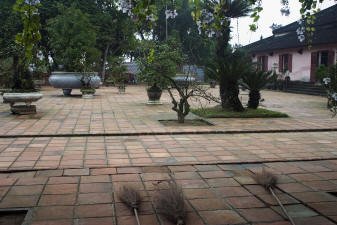
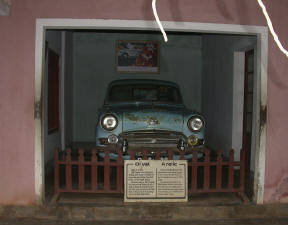
The Nguyen tomb sites are spread
out on the hills on each side of the river. We cross over and leave the river for an
awaiting car
and drove to the Tomb of Tu Duc, built 1867. This emperor was known for his
amorous lifestyle - 100 wives and concubines. This site was a place for
his meditating and entertaining his women. The lovely grounds are tranquil
and relaxing even on a rainy day.
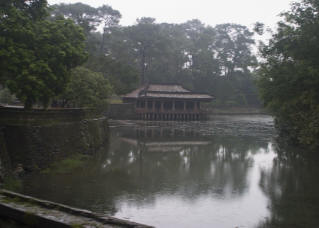
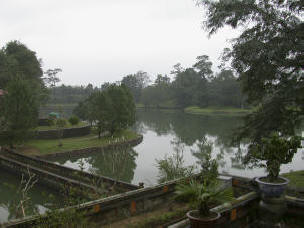
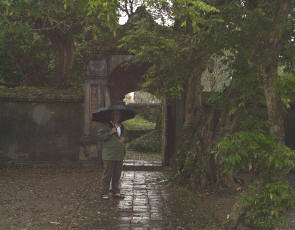
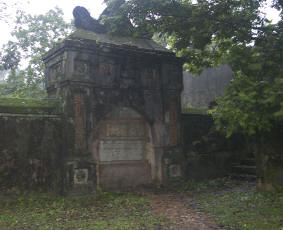
Each of the tomb sites have a stelae pavilion, containing
the marble or stone stele engraved with the biography of the deceased king.
Tu Duc wrote his own. The emperors are not buried under the tablets but instead
have selected sites that on the grounds but remain in secret.
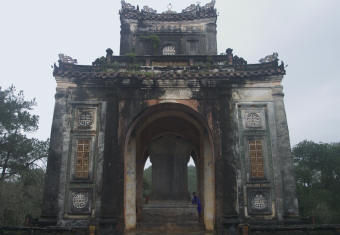
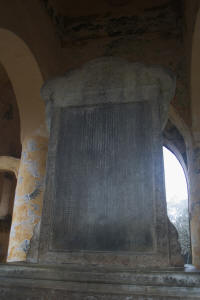
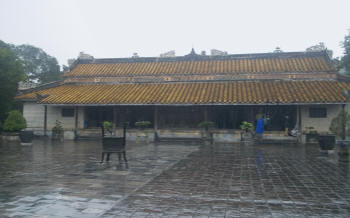
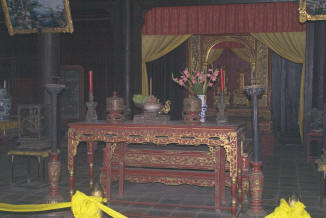
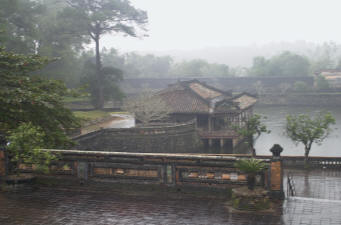
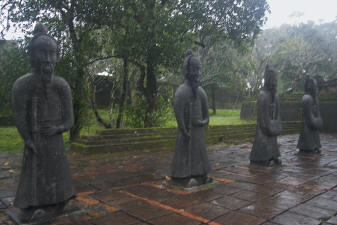
Khai Dinh's tomb was completed in 1931. It was the most
expensive of the Nguyen emperor's tombs and took the longest to build (11
years). The emperor was perhaps not the most well liked; he fancied a
mix of French and Vietnamese architecture which was incorporated in this
complex.
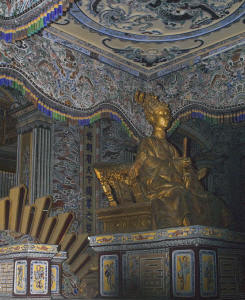
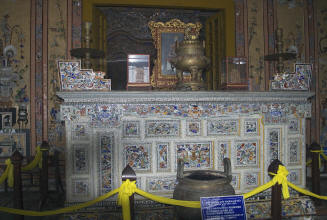
Situated on a hillside, one must climb a series of grand
stairways, lined with dragon headed figures. Unlike the other emperor's
tombs, there are no formal gardens or living quarters - just one main building
of reinforced concrete. Although somewhat gaudy, the tile and glass mosaics of
the interior are a masterpiece of workmanship.
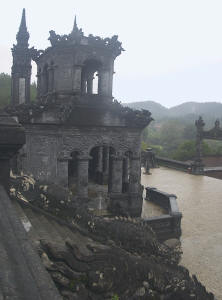
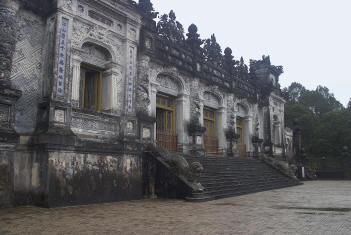
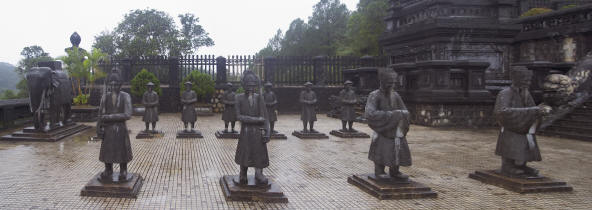
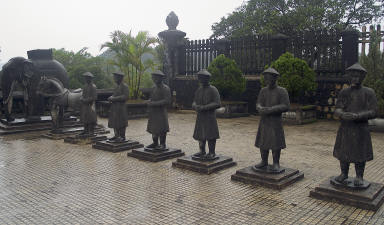
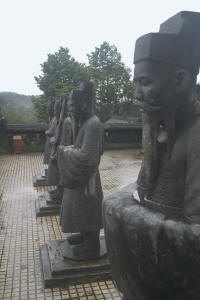
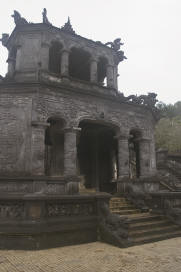
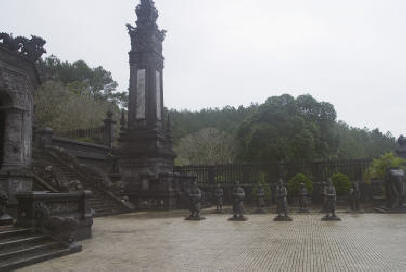
In stark contrast is the tomb of Minh Mang, completed in
1843. Situated in a pine forest with numerous pavilions and courtyards, it
is an example of traditional Ming Chinese design, situated on the grounds along
an east-west axis.
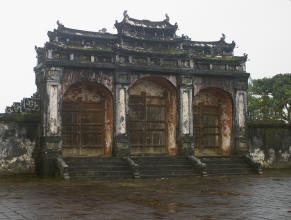
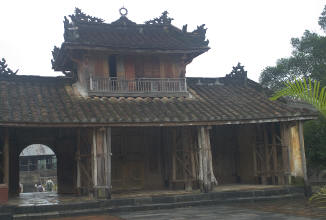
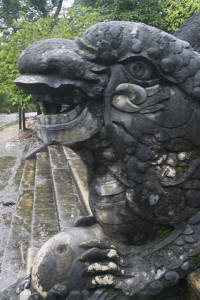
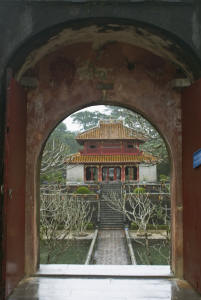
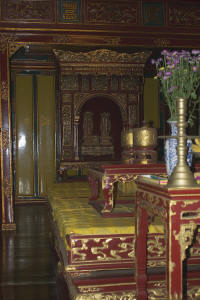
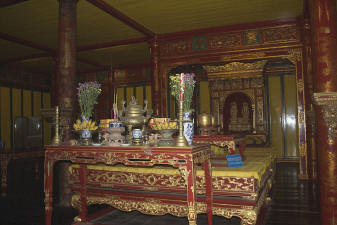
The emperor and his queen who died at 17 are buried on the
grounds.
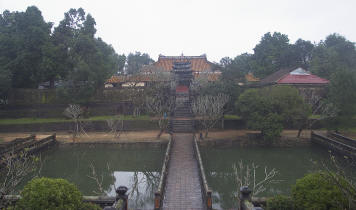
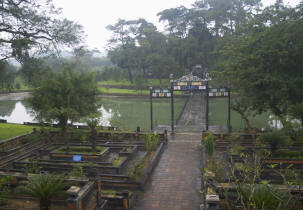
We returned to Hue for lunch at the Tropical Garden
restaurant. That afternoon we drove over the Hai Van Pass (Pass of the
Ocean Clouds) driving south toward DaNang and Hoi an. The country changed
from lowlands to this large mountainous pass, a strategic military site
due the its height and view. Bunkers and pillboxes dot the top of
the ridge and are marked by shells from French, Japanese, American and
Vietnamese forces. The lagoon seen looking south from the pass is filled with
oyster beds for mother-of-pearl used in numerous art works.
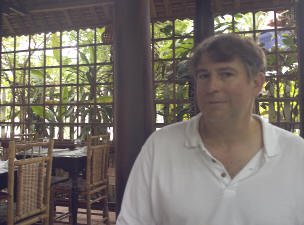
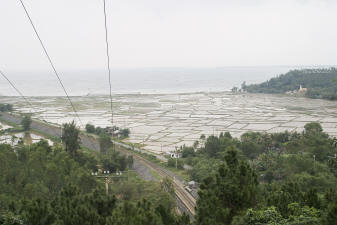
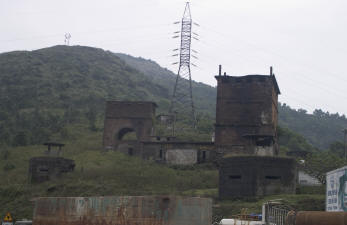
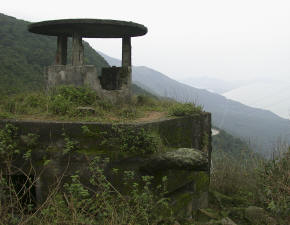
On to Hoi An
|